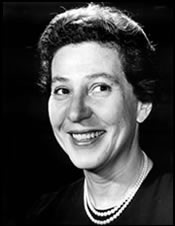
|
Compositions *** |
Canticles for Jerusalem
year
1983
duration
15 minutes
instrumentation
Mezzo-soprano and piano
text
Judah Halevi (transl. by Robert Alter and T. Carmi), Yehuda Amichai (transl. by Harold Schimmel), Psalm 137
commission
Stephanie Friedman and Lois Brandynne
première
April 16, 1989, Harvard University, Maria Tegzes, soprano and Geoffrey Burleson, piano
recording
Available on demo CD
movements
- My heart’s in the East (Judah Halevi)
- This year I traveled far (Yehuda Amichai)
- Light against the Tower of David (Yehuda Amichai)
- By the rivers of Babylon (Psalm 137)
- Ode to Zion (Judah Halevi)
program notes
Fine titles the Canticles a song cycle, a new term for her. There are five songs using various Hebrew texts in translations, but together they form a whole, with the first song, “My heart’s in the East,” describing the desire to return to Jerusalem. The song begins with a beautiful unaccompanied melismatic vocal phrase whose head motif, C-B flat-G flat and other pitches, are reused in this and later songs. The piano provides the unity and dramatic expression for the cycle.…The second song, “This year I traveled far,” describes the visit to Jerusalem, which is coupled with interior suffering: “but the howl I heard within is still from my Judean desert.”….The third song, “Light against the Tower of David,” is marked “Joyous,” which is portrayed by the accompaniment’s rapid figuration. At times segments of the figuration are heard as a slower moving vocal melody. Even more unity is achieved when part of a phrase from song two, originally unaccompanied, is reset with new text and accompaniment …The fourth song, “By the rivers of Babylon,” is Psalm 137 and forms a contrast in the cycle. Strummed chords on the piano strings evoke the harps mentioned in the psalm….The final song, “Ode to Zion,” is recapitulatory. Phrase segments from previous vocal lines and dyads from the opening accompaniment to “My heart’s in the East” return. A prominent melody from the last song later becomes part of a piano interlude and an ending canonic passage. Although each song is focused upon a particular expression, such as longing or light, Fine treated the five songs as part of a whole rather than as four or five independent songs, as in her earlier groupings.
–Heidi Von Gunden, The Music of Vivian Fine, Scarecrow Press, 1999
audio files